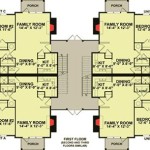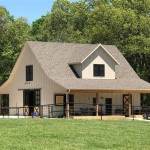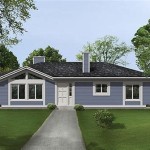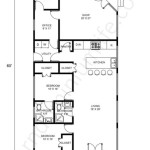Two-Story Luxury House Plans: Design and Considerations
Two-story luxury house plans represent a significant investment and a highly personalized endeavor. These plans offer the opportunity to create expansive and sophisticated living spaces tailored to individual lifestyles and preferences. The process requires careful consideration of various factors, from architectural style and spatial layout to material selection and incorporation of advanced technologies.
The development of two-story luxury house plans often begins with a comprehensive assessment of the client's needs and desires. This involves understanding their lifestyle, family dynamics, entertainment habits, and long-term goals for the property. The size and layout of the lot also play a crucial role in determining the feasibility and suitability of different design options. A skilled architect or designer will translate these requirements into a detailed plan that optimizes space, maximizes natural light, and creates a harmonious environment.
Luxury house plans differ significantly from standard residential designs. They often incorporate high-end materials, intricate detailing, and advanced technological features. These elements contribute to the overall aesthetic appeal, functionality, and value of the property. The selection of appropriate materials and the integration of modern technologies require a thorough understanding of current trends and best practices in the construction industry.
Architectural Style and Design Elements
The architectural style is a foundational element of any luxury house plan. It dictates the overall aesthetic and influences the selection of materials, finishes, and landscaping. Several architectural styles are commonly associated with luxury homes, each offering a unique character and appeal.
Modern architecture, characterized by clean lines, minimalist design, and expansive glass windows, is a popular choice for luxury homes. These designs often emphasize open floor plans, natural light, and seamless integration with the surrounding environment. The use of sustainable materials and energy-efficient technologies is also a hallmark of modern luxury homes.
Traditional architectural styles, such as Mediterranean, Colonial, and Victorian, offer a more classical and ornate aesthetic. These designs often feature intricate detailing, elaborate moldings, and formal layouts. The use of natural stone, brick, and wood is common in traditional luxury homes.
Transitional architecture blends elements of both modern and traditional styles, creating a balanced and sophisticated aesthetic. These designs often incorporate clean lines and open spaces while retaining some of the traditional detailing and ornamentation. Transitional homes are often favored by those seeking a timeless and elegant design.
Beyond the overall architectural style, specific design elements contribute to the luxury and functionality of a two-story house plan. These elements may include:
*Grand entryways:
Creating a striking first impression with high ceilings, elegant lighting, and custom millwork. *Gourmet kitchens:
Featuring state-of-the-art appliances, custom cabinetry, and ample counter space. *Luxurious bathrooms:
Equipped with spa-like features such as soaking tubs, walk-in showers, and heated floors. *Home theaters:
Designed for optimal viewing and sound quality, with comfortable seating and advanced audio-visual equipment. *Outdoor living spaces:
Extending the living area outdoors with covered patios, outdoor kitchens, and swimming pools. *Smart home technology:
Integrating automated lighting, security, climate control, and entertainment systems.Spatial Planning and Functionality
Effective spatial planning is essential for creating a comfortable and functional luxury home. The layout should optimize the flow of traffic, maximize natural light, and provide ample privacy for residents. The arrangement of rooms and the allocation of space should be carefully considered to meet the specific needs and preferences of the homeowners.
In a two-story house plan, the separation of living spaces is a key consideration. Commonly, the ground floor is dedicated to communal areas such as the living room, dining room, kitchen, and home office. The upper floor is typically reserved for bedrooms, bathrooms, and private living spaces such as a study or family room. This arrangement provides a clear distinction between public and private areas, enhancing both functionality and privacy.
Open floor plans are a popular choice for modern luxury homes. They create a sense of spaciousness and encourage social interaction. However, it is important to define distinct zones within the open space to maintain a sense of order and functionality. This can be achieved through the use of furniture arrangements, changes in flooring, and strategically placed architectural elements.
The size and configuration of the bedrooms are also important considerations. Luxury homes typically feature spacious master suites with walk-in closets, en-suite bathrooms, and private balconies or patios. Guest bedrooms should also be comfortable and well-appointed, providing a welcoming experience for visitors.
The inclusion of specialized spaces, such as home gyms, wine cellars, and art studios, can further enhance the luxury and functionality of a two-story house plan. These spaces should be designed to meet the specific needs and interests of the homeowners, providing opportunities for recreation, relaxation, and personal enrichment.
Accessibility is increasingly becoming a crucial consideration in luxury home design. Incorporating features such as elevators, ramps, and wider doorways can ensure that the home is accessible to people of all ages and abilities. Universal design principles can be applied to create a home that is both stylish and functional for everyone.
Key Considerations for Material Selection and Construction
The selection of materials and the quality of construction are paramount in creating a lasting and luxurious home. High-end materials not only enhance the aesthetic appeal but also contribute to the durability, energy efficiency, and overall value of the property. Selecting the right materials requires careful consideration of factors such as climate, budget, and aesthetic preferences.
Exterior materials should be chosen for their durability, weather resistance, and aesthetic appeal. Natural stone, brick, and wood are popular choices for luxury homes, offering a timeless and elegant look. High-quality siding materials, such as fiber cement and engineered wood, can also provide a durable and low-maintenance alternative. The choice of roofing materials, such as slate, tile, or metal, can significantly impact the overall aesthetic and longevity of the home.
Interior materials should be selected for their beauty, comfort, and functionality. Hardwood flooring, natural stone tiling, and high-end carpeting are common choices for luxury homes. Custom cabinetry, designer lighting fixtures, and premium plumbing fixtures can add a touch of elegance and sophistication to the interior spaces. The choice of paint colors and finishes can also significantly impact the overall ambiance of the home.
Energy efficiency is an increasingly important consideration in luxury home design. Incorporating energy-efficient windows, insulation, and HVAC systems can significantly reduce energy consumption and lower utility costs. The use of sustainable materials and renewable energy sources can further enhance the environmental friendliness of the home.
The construction process should be meticulously managed by experienced professionals. A qualified general contractor can ensure that the project is completed on time, within budget, and to the highest standards of quality. Regular site inspections and communication between the architect, contractor, and homeowner are essential for ensuring that the project progresses smoothly.
The integration of smart home technology requires careful planning and execution. A qualified technology integrator can design and install a comprehensive system that meets the specific needs and preferences of the homeowners. This may include automated lighting, security, climate control, entertainment, and communication systems.
Landscaping plays a crucial role in enhancing the overall aesthetic and value of a luxury home. Professionally designed landscaping can create a welcoming and inviting environment, providing a seamless transition between the indoor and outdoor spaces. The use of mature trees, flowering plants, and water features can add visual interest and create a sense of tranquility.
Obtaining the necessary permits and approvals from local authorities is an essential step in the construction process. A qualified architect or contractor can guide the homeowner through the permitting process and ensure that the project complies with all applicable building codes and regulations. Failure to obtain the necessary permits can result in costly delays and penalties.
Two-story luxury house plans offer an incredible opportunity to create a bespoke living environment. By carefully considering the architectural style, spatial planning, material selection, and construction process, homeowners can create a home that is both luxurious and functional, reflecting their unique tastes and lifestyle. The key is to engage with experienced professionals who can guide them through every step of the process, ensuring a successful and rewarding outcome.

Unique Two Story House Plans Floor For Luxury Homes Design New

Stunning Two Story Luxury Home Plan 66070we Architectural Designs House Plans

Luxury Two Story Contemporary Style House Plan 8501

Unique Two Story House Plans Floor For Luxury Homes

Two Story Home Plan With Luxury Touches Donald Gardner

Luxury House Concept With 2 Car Garage Pool Area Fachadas De Casas Modernas Belas Plantas Casa Planos

Luxury Home Photos New Custom Homes With Swimming Pool 2 Story Floor

Luxury And Comfortability Two Y House Plan With Four Bedrooms Home Gym Decors

V 381 Architectural Design For Luxury Modern House Two Story

Coastal House Plan Luxury 2 Story West Indies Home Floor Plans Mansion Craftsman








